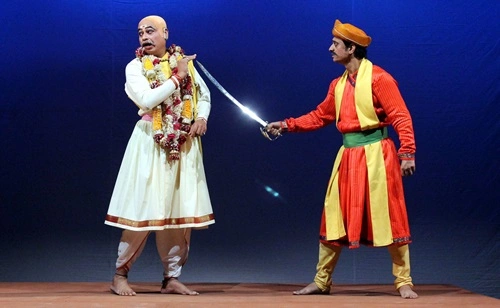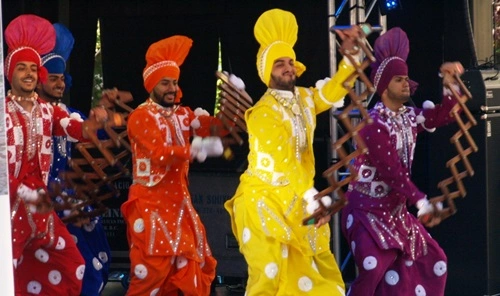Assam, the gateway to the northeast of India, is a land rich in cultural diversity, folklore, and vibrant traditions. The state is not only famous for its lush tea gardens, mighty Brahmaputra river, and exotic wildlife, but also for its distinctive folk and traditional dances. Dance is an integral part of Assam’s festivals, celebrations, and religious rituals, reflecting the heritage, emotions, and way of life of its people.
With numerous ethnic groups and tribal communities, Assam boasts a variety of dance forms that are unique, colorful, and deeply rooted in tradition. These dances are performed during festivals, weddings, harvest seasons, and religious ceremonies, accompanied by traditional Assamese music and instruments.
Let’s take a look at the most popular traditional dance forms of Assam and their significance.
1. Bihu Dance – The Iconic Folk Dance of Assam
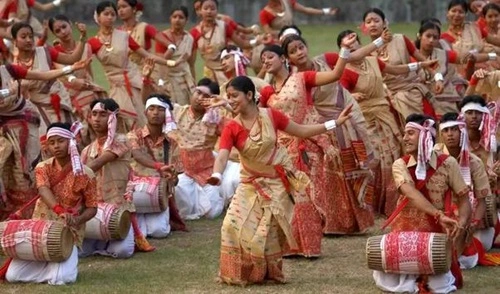
One of the most famous and energetic dance forms of Assam, Bihu dance is performed during the Rongali Bihu festival, which marks the Assamese New Year and the onset of spring.
- Features: Rapid foot movements, graceful hand gestures, expressive body language, and rhythmic beats.
- Themes: Celebration of youth, love, and fertility.
- Occasions: Rongali Bihu (April), harvest festivals, and cultural events.
Performed by both men and women, Bihu dance is accompanied by dhol (drum), pepa (buffalo horn flute), gogona (bamboo instrument), and taal (cymbals). The dancers wear traditional Assamese attire, with women in mekhela chador and men in dhoti-kurta with gamusa.
2. Sattriya Dance – The Classical Dance of Assam
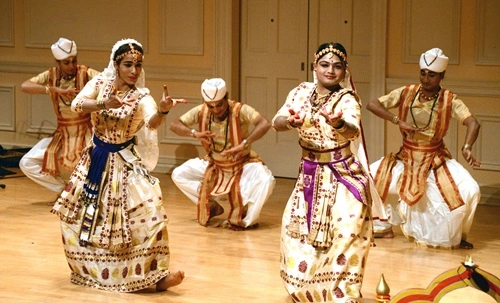
Sattriya is one of the eight classical dance forms of India, developed by Srimanta Sankardeva, a Vaishnavite saint and social reformer in the 15th century. It was originally performed by monks in Assam’s Satras (Vaishnavite monasteries).
- Features: Graceful hand gestures (mudras), rhythmic footwork, and devotional expressions.
- Themes: Mythological stories from Bhagavata Purana and Ramayana.
- Occasions: Temple rituals, religious festivals, and cultural programs.
Today, Sattriya has evolved into a popular classical dance form and is performed by both men and women on national and international stages.
3. Bagurumba – The Traditional Dance of the Bodos
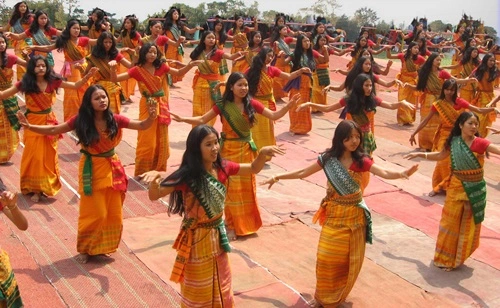
Bagurumba is a traditional dance of the Bodo community, one of Assam’s largest ethnic groups. It is also known as the “Butterfly Dance” because of the dancers’ flowing movements that resemble the fluttering of butterflies.
- Features: Soft, rhythmic steps, gentle sways, and synchronized group formations.
- Themes: Nature, peace, and harmony.
- Occasions: Bodo festivals like Bwisagu (New Year festival) and other cultural events.
Performed by Bodo women in colorful traditional attire, Bagurumba dance is graceful and deeply connected to nature.
4. Jhumur Dance – The Folk Dance of Tea Tribes
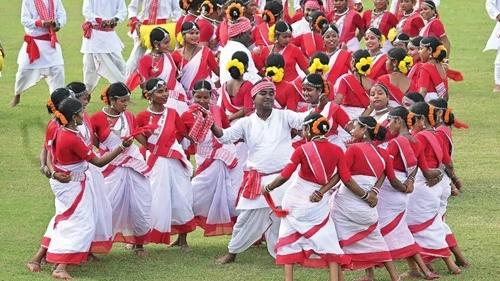
The Jhumur dance is performed by tea garden workers, mainly by Adivasi communities who migrated to Assam during British rule. It is a celebration of their daily life, unity, and hardships.
- Features: Simple, synchronized movements and rhythmic steps.
- Themes: Love, happiness, and social bonding.
- Occasions: Celebrated in tea gardens, Bihu festivals, and social gatherings.
Jhumur dance is accompanied by traditional drums, flutes, and folk songs, making it a heartfelt and soulful performance.
5. Ali Ai Ligang – The Agricultural Dance of the Mishing Tribe
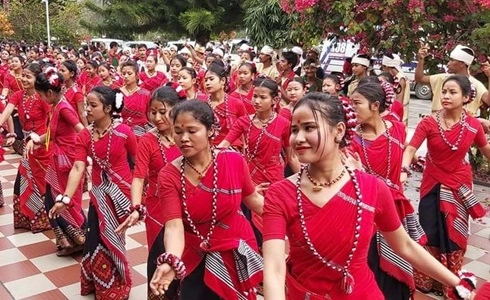
The Ali Ai Ligang dance is performed by the Mishing tribe, one of the major ethnic groups of Assam. It is associated with agriculture and fertility, marking the beginning of the sowing season.
- Features: Vigorous movements, joyful expressions, and folk songs.
- Themes: Prosperity, farming, and gratitude to nature.
- Occasions: Ali Ai Ligang festival, celebrated in February-March.
The dance symbolizes the unity of farmers and their relationship with nature, and is performed with traditional instruments like the dhul, pepa, and toka.
6. Deodhani Dance – The Devotional Dance of Shakti Worship
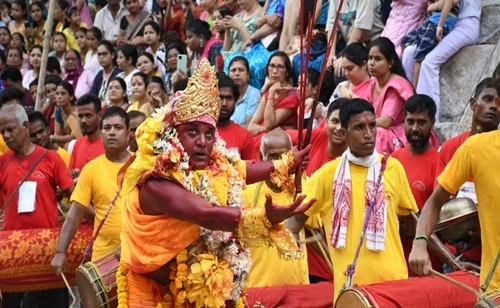
Deodhani dance is a mystical and semi-trance dance form, performed in honor of Goddess Manasa (serpent goddess). It is believed that the dancer is possessed by the spirit of the goddess during the performance.
- Features: Intense body movements, rapid footwork, and divine expressions.
- Themes: Worship, spirituality, and supernatural experiences.
- Occasions: Manasa Puja and religious rituals.
Deodhani dance is mostly performed by women, who often carry swords or shields, representing the goddess’s power.
7. Bichhua Dance – The Traditional Dance of the Deori Tribe
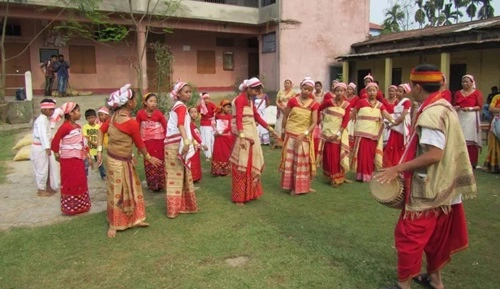
Bichhua dance is performed by the Deori community, known for its tribal traditions and animistic beliefs. The dance is a symbol of joy and social bonding.
- Features: Fast-paced steps, hand gestures, and storytelling.
- Themes: Tribal life, nature, and ancestral worship.
- Occasions: Deori festivals and cultural events.
The dance is accompanied by folk songs and traditional instruments, making it a lively and interactive performance.
8. Bhortal Dance – The Rhythmic Dance of Devotion
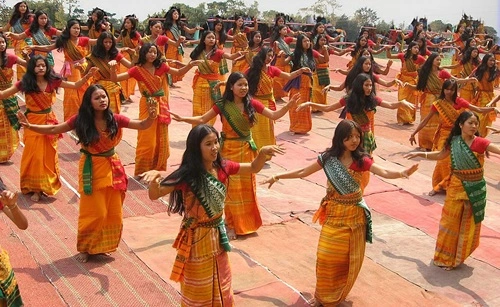
Bhortal dance is a synchronized group dance, performed by men and women with cymbals in hand. It was introduced by Guru Shankardeva’s disciples to promote devotional music and dance.
- Features: Rapid movements, cymbal clashing, and rhythmic beats.
- Themes: Devotion to Lord Krishna and Vaishnavite traditions.
- Occasions: Religious festivals, Bihu celebrations, and temple rituals.
Bhortal dance is known for its fast pace and coordinated group formations, creating a mesmerizing visual experience.
Conclusion
The traditional dances of Assam are more than just performances—they are a way of life, a celebration of nature, and an expression of devotion and unity. Each dance form carries a distinct identity, representing different communities and their cultural beliefs.
From the lively Bihu dance to the spiritual Deodhani, from the graceful Bagurumba to the rhythmic Bhortal, every dance showcases Assam’s rich artistic heritage.
As Assam continues to evolve, these folk and classical dances remain an integral part of its cultural fabric, ensuring that future generations carry forward the vibrant legacy of Assam’s traditional dances. Whether in rural villages or international festivals, Assam’s dance traditions continue to captivate and inspire people around the world.
